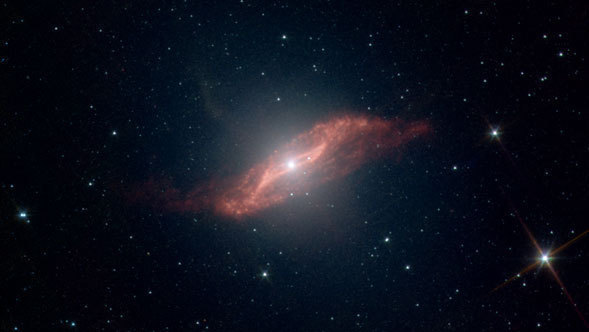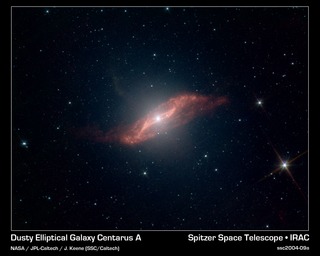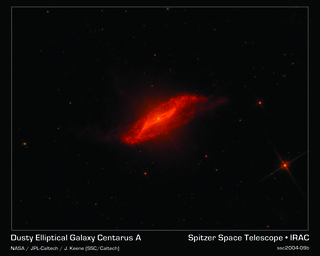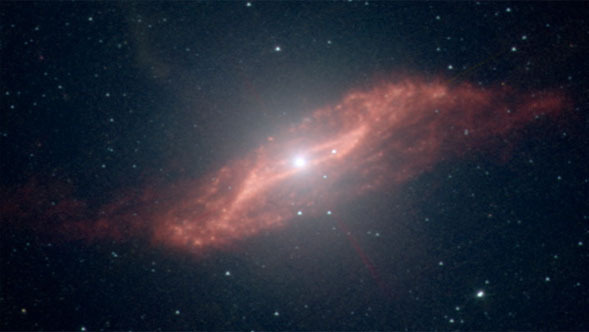
Credit: NASA/JPL-Caltech/J. Keene (SSC/Caltech)
Observation • June 1st, 2004 • ssc2004-09b
ssc2004-09b
This image taken by NASA's Spitzer Space Telescope shows in unprecedented detail the galaxy Centaurus A's last big meal: a spiral galaxy seemingly twisted into a parallelogram-shaped structure of dust. An elliptical galaxy located 10 million light-years from Earth, Centaurus A is one of the brightest sources of radio waves in the sky. These radio waves indicate the presence of a supermassive black hole, which may be "feeding" off the leftover galactic meal.
This spectacular image combines 5.8 micron and 8.0 micron data obtained by an infrared array camera aboard Spitzer. These wavelengths emphasize the emission from dust rather than the light produced by stars in the galaxy. The resulting image shows with greater clarity the strange parallelogram-shaped feature embedded near the center of the galaxy.
Scientists have created a model that explains how such a strangely geometric structure could arise. In this model, a spiral galaxy falls into an elliptical galaxy, becoming warped and twisted in the process. The folds in the warped disc create the parallelogram-shaped illusion.
About the Object
- Name
- Centaurus A • NGC 5128
- Type
- Galaxy > Type > Elliptical
- Galaxy > Type > Interacting
- Distance
- 11,000,000 Light Years
- Redshift
- 0.001825
Color Mapping
| Band | Wavelength | Telescope |
| Infrared | 5.8 µm | Spitzer IRAC |
| Infrared | 8.0 µm | Spitzer IRAC |
Astrometrics
- Position (J2000)
- RA =13h 25m 26.7s
- Dec = -43° 1' 6.7"
- Field of View
- 23.4 x 17.6 arcminutes
- Orientation
- North is 361.1° left of vertical







